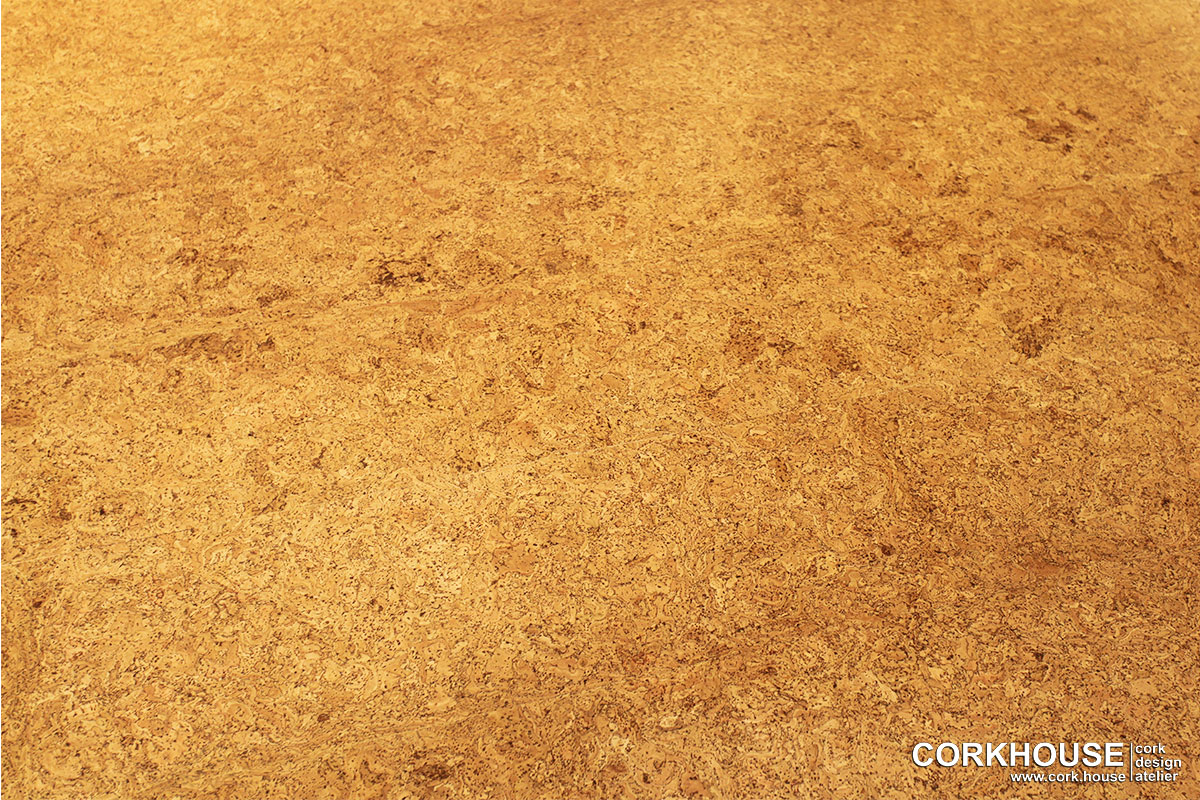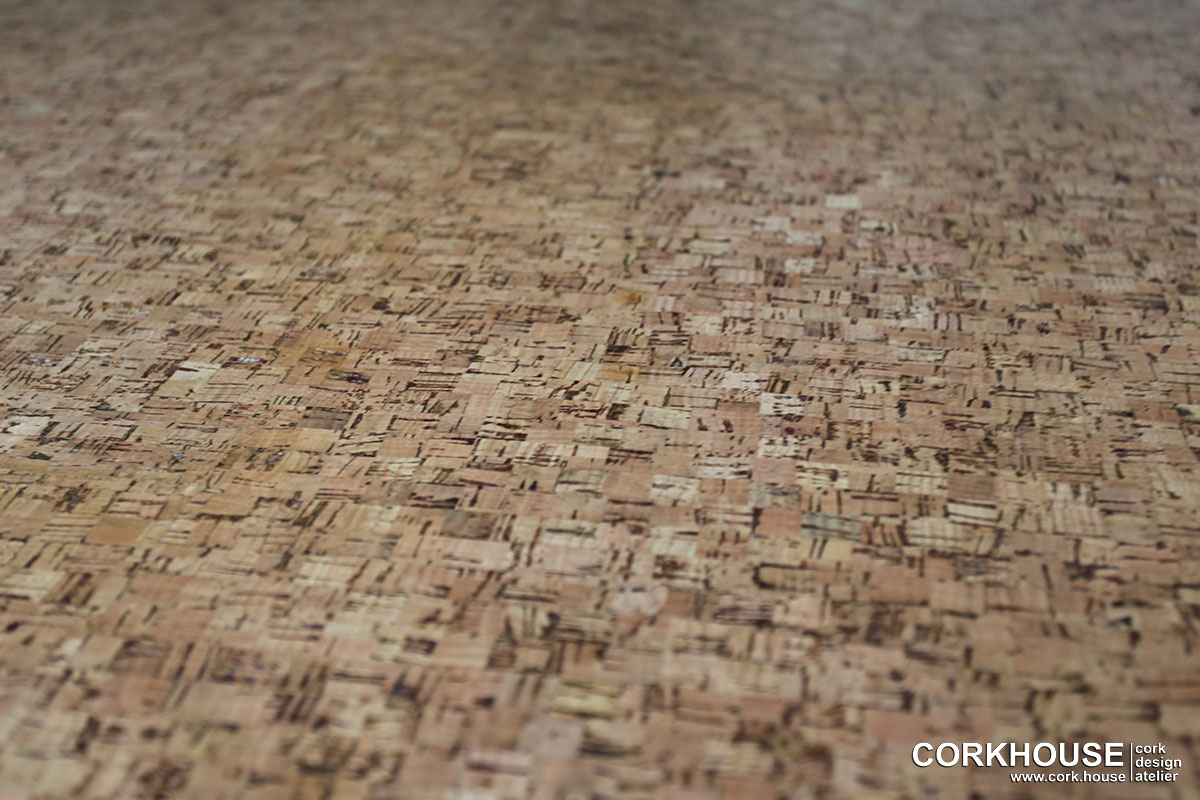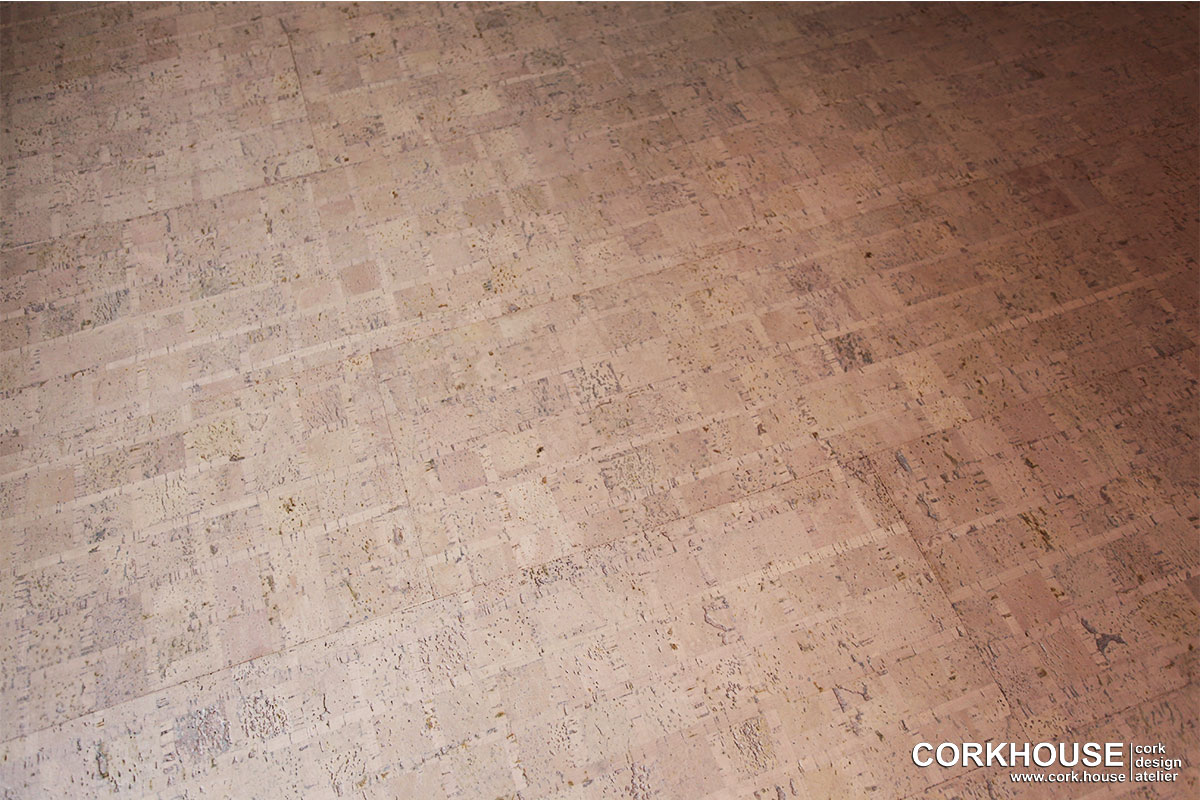Glue-down cork floor. Glue-down cork covering
Among the variety of floor coverings, the cork coverings, stand out today. Cork covering is existing today in two versions: glue-down and floating.
Glue-down cork
Let’s consider the glue-down cork. What is it? And where does this name come from?
It’s very simple: glue-down – because such a cork is mounted using a glue.
And now more details: an uninitiated person will get the word “cork” like the image of a bottle sealed with the above-mentioned object. And this is completely justified. After all, originally from the bark of the cork tree it was the cork made for the capping of various containers. Only later the decision on how to use the remaining cork residues in large quantities came to be, namely, to put them into the production of cork coverings.
Cork making process
If the process of harvesting cork raw materials has not changed with the years, the technology of making cork coverings does not stand on their way but is improved to the extent that new scientific and technical solutions appear.
Currently, cork coverings are obtained from the pre-ground cork raw materials (the size of the cork granules can be different at the same time). Moreover, the larger the granules, the higher the quality of the final product – the cork covering is obtained.
The cork is thermally exposed and then pressed under the certain pressure into the sheets that are subsequently cut into a standard panel size.
Cork coverings can have a decorative layer of natural cork veneer, which is created manually by designers in Italy and is combined with the finished cork sheets mainly due to the natural binder contained in the cells of the bark of oak cork – suberin. Natural cork covers as much as possible transfer the beauty of a living tree and represent an essentially independent work of art, so that almost every panel has an original appearance and a unique pattern. And due to the minimal use of foreign synthetic binders, obtained the material that is as friendly as possible to human health and is environmentally friendly in terms of taking care of the nature. After all, to get cork raw materials, there is no need to cut down the trees. The bark is removed from the cork oaks, just once in 9 years, and the process of building a new layer of cork bark begins again on the “naked” tree.
Floor cork coverings with print technology are produced mainly in Switzerland and Portugal .This means that an image is applied to the cork sheets using a special technology. Options of the applied drawings are very diverse and give wide scope for a variety of interior design solutions.
Example of a glue-down cork coverings
Cork covering varnish treatment
For the increased wear resistance, the Hot covering technology of the factory – type covering the cork panels with varnish – has been developed. Thanks to this technology, cork flooring acquires a 33 class of wear resistance, i.e. such floors can be used in a public area with high patency (such as airports, hospitals, train stations, schools, sports facilities) and other similar places.
If cork coverings are produced without factory varnish covering, then it is mandatory to additionally apply a special two-component varnish on a water basis to these coverings. Due to its structure, such varnish, drying up (otherwise, passing through the crystallization process), acquires the properties that are like the properties of the cork, namely: strength and elasticity, thereby multiplying these properties.
The application of the varnish in three layers allows imparting the thirty-first class of wear resistance to a cork flooring. Such coverings are used in commercial premises with an average patency. When used at home, the floors treated in this way will last you about ten years before you need to re- varnish it.
However, they do not require any special care or special operating conditions, such as, for example, parquet floors or laminate. It is enough to clean them in the usual way: by vacuum cleaner or wet cleaning – everything is permissible. A particularly pleasant point is that the cork floors have an antistatic effect, i.e. they do not attract dust.
Print of a glue-down cork covering. You can depict anything you like
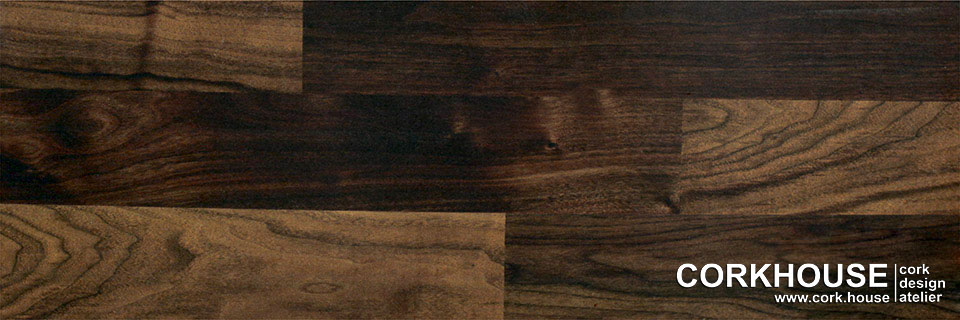
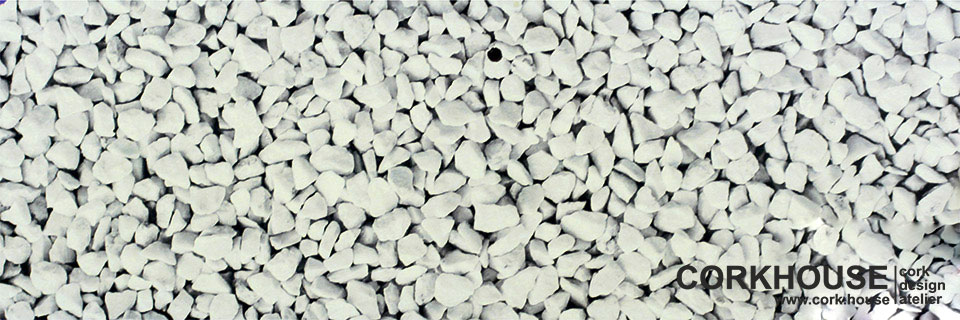


Possible sizes of glue-down cork coverings
Another significant advantage of cork flooring in the glue-down version is that in addition to the standard sizes, it is possible to produce any glue-down covering in almost any size, whether it is natural cork covering or with the print technology, starting from the smallest details (40x40mm for mosaic) to large lamellas of various sizes (900 / 600х150mm, 900 / 600х100mm, 300х300mm and others), which allows, using different types of stacking of these lamellas, to obtain exclusive floor coverings of any imagination.
The number of design solutions in this case is almost unlimited. It should be added that the floor cork coverings can have different thicknesses: 4mm, 6mm, 8mm – the dimensions of the glue-down floor, which is represented on the Russian market of finishing materials.
However, there is also a segment of cork flooring of the VIP class. The thickness of such floors will be 12mm and higher, based on the customer requests. Also, to the VIP category are the floor coverings from a solid cork. However, it is obvious that the cost of such coverings will be much higher.
In addition to floor cork coverings, there are also wall and even ceilings coverings in the modern market. Their thickness is 2-3mm. Such coverings are offered in the form of cork sheets mainly in a 600x300mm size. Either this can be a roll cork or cork wallpaper, attached to the wall like other types of wallpaper. But whichever type of cork is chosen for walls, it must be remembered that the glue must be appropriate. Then your interior will be impeccable. Again, the appearance of cork wall coverings is very original and unusual. So, you can turn your house into something special and amazing.


